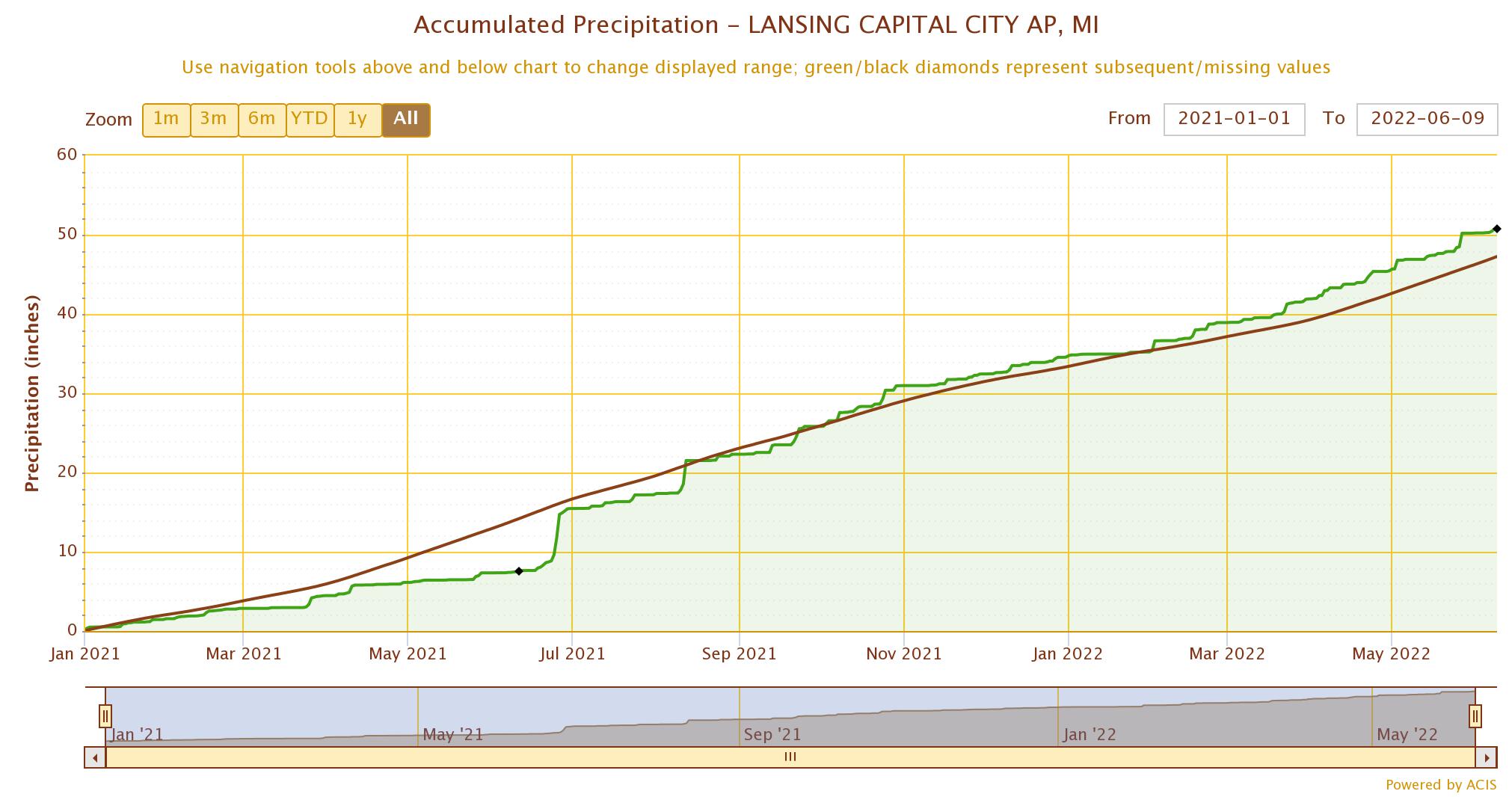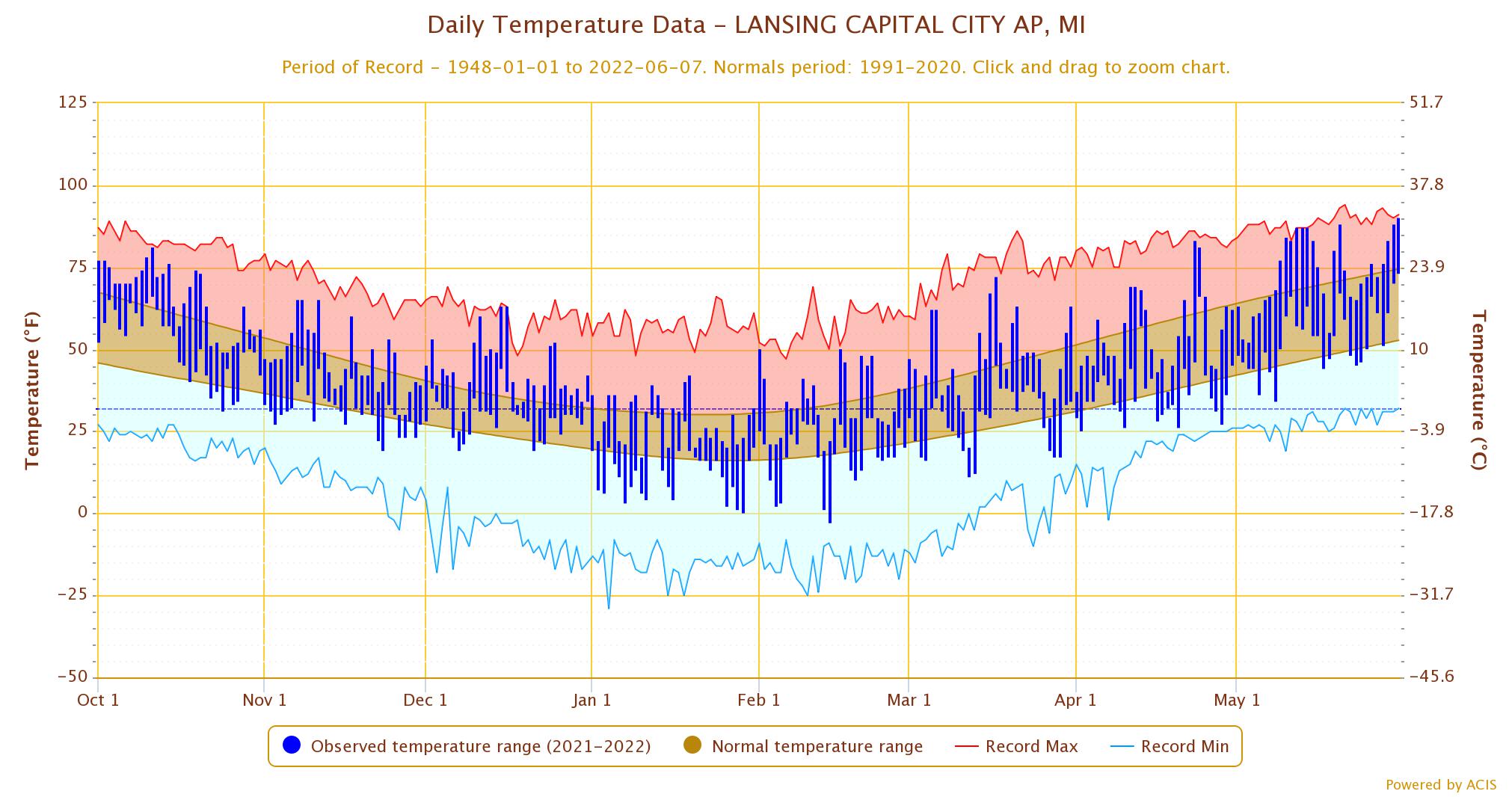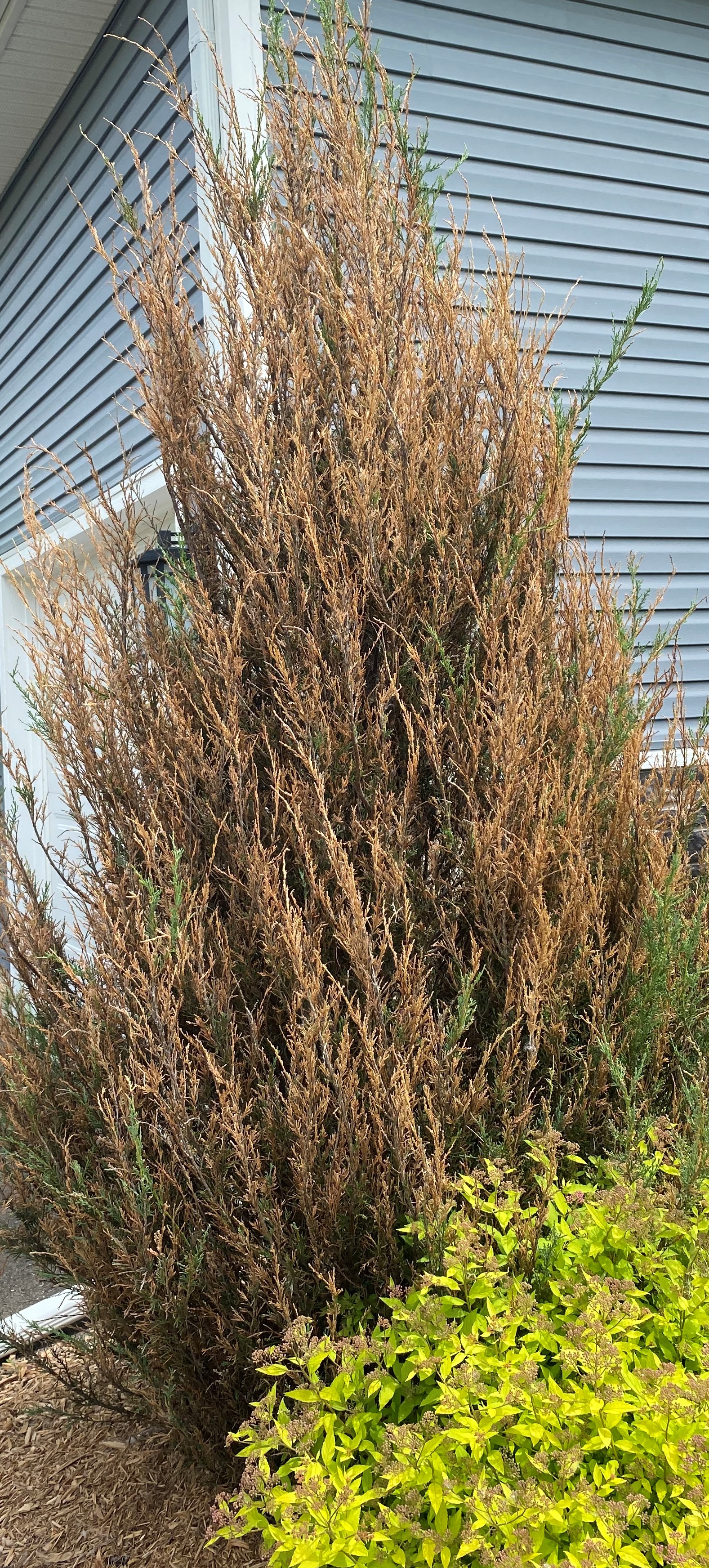Winter injury on shrubs following combined environmental stresses
MSU Plant & Pest Diagnostics and MSU Extension have seen an uptick in the number of winter injury cases in spring 2022.

The Michigan State University Plant & Pest Diagnostics lab as well as several Michigan State University Extension educators are receiving numerous inquiries from landscapers and residents that are concerned about the dieback and/or death of evergreen bushes. Arborvitae, juniper and yew are common in Michigan’s landscapes and typically survive winters without concern. But this year, they have been the subject of numerous complaints.
Samples submitted to the MSU Plant & Pest Diagnostics lab are examined for signs of insects and pathogens, we also consider abiotic factors that affect plant health. For most of these samples, we have not been able to identify any clear cause of the dieback. However, based on a review of environmental data from the summer of 2021 and following winter months (2021-2022), we have a few ideas.
We began by looking at accumulated precipitation throughout 2021 (Figure 1). In 2021, much of lower Michigan had below normal rainfall from March to mid-summer. This was followed by a series of heavy rain events and a rapid transition to wetness in mid-summer (leading to flooding in some areas), followed by an above average amount of precipitation from fall 2021 onward. Although established trees can handle moderate drought, it causes plant stress, making them more susceptible to other problems. Furthermore, the rapid shift from dry to wet conditions adds additional stress, as does excessively wet soil conditions.

A review of temperatures from 2021 – 2022 found a few trends of note (Figure 2). Temperatures in December 2021 were abnormally mild; there were approximately 23 days in December where the maximum temperature was above the normal range. In contrast, January brought much colder temperatures, with approximately 18 days with a minimum temperature below the normal range. These departures from normal temperatures may have reduced plant cold hardiness.

We tend to think of winter dormancy and cold hardiness as synonymous. However, acclimation to cold temperatures is distinct from dormancy. Each fall plants require prolonged cooling temperatures to both enter dormancy and develop cold hardiness. Once dormant, plants track chilling hours (temperatures above freezing but below 60 degrees Fahrenheit). Until chilling hours are met, a plant will not readily break dormancy to resume growth in the spring. Temperatures below freezing increase cold hardiness, but do not affect chilling requirements.
Temperatures in November 2021 followed a cooling pattern that would lead to both dormancy and cold acclimation. However, cold acclimation is both gradual and reversible. The abnormally warm temperatures in December 2021 occurred at a time when cold hardiness should have still been gradually increasing. Under these abnormally warm periods, plants may rapidly de-acclimate, losing some or much of their cold hardiness. After such an interruption, it is a slow process for plants to regain the lost cold hardiness.
Unfortunately, the warm December was followed abruptly by below-normal temperatures throughout much of January into February. It is likely that the abnormally warm temperatures in December interrupted and reversed cold acclimation. Vulnerable plants were then met abruptly by the cold January conditions without adequate cold acclimation.

Environmental factors affecting plants must be considered in combination. Cold injury, such as winter desiccation, is likely to have contributed. When the ground is frozen, an evergreen cannot take up water, but will still lose water through its needles. The damage is often worse on one side, where it is most exposed to the wind, or to additional sources of heat, such as rocks radiating solar heat. Data from our MSU Enviroweather station near Lansing, Michigan, indicate that the ground was frozen through all of January and February 2022, making conifers vulnerable to desiccation on particularly warm, windy or sunny days. The stress caused by moisture fluctuations during 2021, noted earlier, may be an additional factor contributing to the plant injury.
Unfortunately, environmental causes for plant decline/death are difficult to prove. But, based on the number of inquiries received we believe that these conditions played a role. Moving forward there is little that can be done differently to set these plants up for success. Plants that were injured, but not killed, will need some pruning to remove dead tissue. In extreme cases where the amount of dead tissue is significant and what remains is aesthetically unacceptable, the entire shrub may need to be removed.



 Print
Print Email
Email

